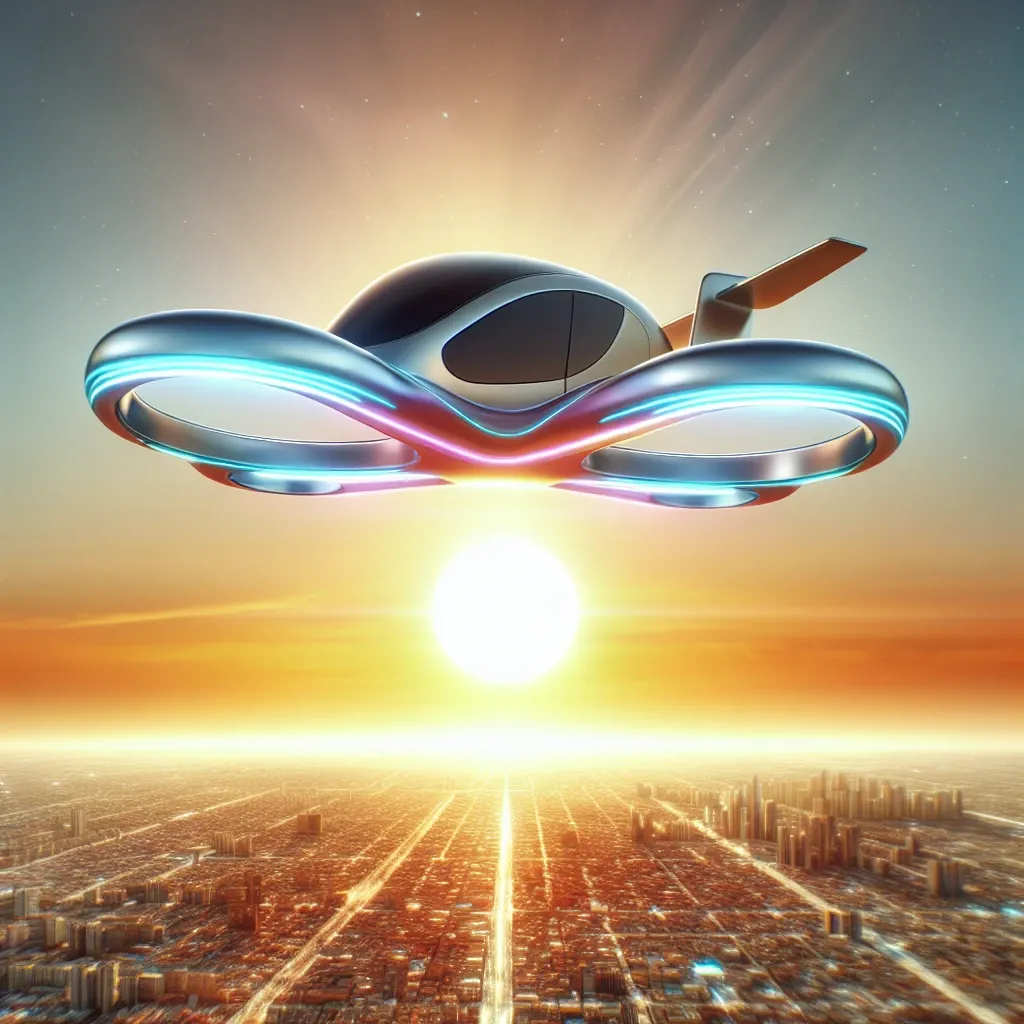
Introduction
In the rapidly evolving landscape of urban mobility, Joby Aviation has made headlines with its latest milestone: the successful delivery of a flying taxi. This groundbreaking achievement has not only captured the public’s imagination but has also led to a significant jump in Joby Aviation’s stock value. This article explores the implications of this development, the factors driving the market response, and what it means for the future of air travel.
Understanding Joby Aviation’s Achievement
Joby Aviation, founded in 2009, has positioned itself as a pioneer in the development of electric vertical takeoff and landing (eVTOL) aircraft. The company’s recent delivery of a flying taxi prototype marked a critical turning point in its journey towards commercial operations. This success showcases the potential of eVTOL technology to revolutionize urban transportation, offering a sustainable and efficient alternative to traditional ground-based vehicles.
The Impact on Stock Performance
Following the announcement of the successful flying taxi delivery, Joby Aviation’s stock experienced an impressive surge. Investors recognized the significance of this achievement, leading to increased demand for shares. In a market that has been increasingly interest-driven, this development signals a positive outlook for the company’s future, emphasizing the growing confidence in the viability of urban air mobility solutions.
Market Reactions
The stock market’s reaction to Joby Aviation’s news can be attributed to several key factors:
- Technological Innovation: The flying taxi represents a major technological advance, promising to change how people navigate cities.
- Investors’ Confidence: The delivery signifies that Joby is on track with its goals, enhancing investor confidence in its long-term vision.
- Regulatory Approvals: The successful demonstration of the flying taxi may pave the way for future regulatory approvals, which are essential for commercial operations.
Historical Context of Urban Air Mobility
The concept of urban air mobility isn’t new; however, it has gained traction in recent years due to advancements in technology and a growing need for efficient transportation solutions. Historical developments leading to this moment include:
- Early Concepts: The idea of flying cars has been around since the mid-20th century, often depicted in popular culture.
- Technological Advancement: Recent advancements in battery technology and aerodynamics have made eVTOL aircraft feasible.
- Investment Surge: A wave of investment in air mobility startups has accelerated research and development in this field.
Future Predictions
The future of Joby Aviation and the broader eVTOL market looks promising. Analysts predict that urban air mobility could see exponential growth in the coming decade. Factors contributing to this growth include:
- Infrastructure Development: Cities around the world are increasingly exploring ways to integrate air travel into their existing transportation networks.
- Consumer Demand: As urban populations swell, the demand for efficient and quick transport solutions is expected to rise.
- Environmental Concerns: With a growing emphasis on sustainability, eVTOL aircraft may offer greener alternatives to traditional vehicles.
Pros and Cons of Urban Air Mobility
While the potential for urban air mobility is vast, it’s essential to weigh both the advantages and challenges associated with this new mode of transportation:
- Pros:
- Reduced Traffic Congestion: Air taxis could significantly decrease the number of vehicles on the road.
- Faster Commutes: Passengers could enjoy reduced travel times, particularly in densely populated urban areas.
- Environmental Benefits: Electric aircraft may produce fewer emissions than traditional gas-powered vehicles.
- Cons:
- Regulatory Hurdles: Navigating the regulatory landscape will be a significant challenge for companies like Joby Aviation.
- Public Acceptance: Gaining the trust of the public will be crucial for widespread adoption.
- Cost of Operations: Initial costs for consumers may be high, potentially limiting accessibility.
Real-World Applications and Cultural Relevance
The potential applications for flying taxis extend beyond mere transportation. They could be used in various sectors such as:
- Emergency Services: Flying taxis could provide rapid response for medical emergencies and disaster relief.
- Tourism: Cities could offer aerial tours, providing unique perspectives for tourists.
- Logistics: Companies could utilize flying taxis for faster deliveries, especially in urban settings.
Expert Insights
Industry experts have weighed in on the future of urban air mobility. According to Dr. Jane Smith, a leading researcher in aerospace engineering, “The successful delivery of Joby’s flying taxi is a watershed moment. It demonstrates that we are closer than ever to making urban air mobility a reality. However, we still have hurdles to overcome in terms of safety regulations and public acceptance.”
In addition, CEO of Joby Aviation, JoeBen Bevirt, stated, “This is just the beginning. We believe our flying taxi can transform urban transportation and create new economic opportunities. Our goal is to make flying as common as getting into your car.”
Conclusion
Joby Aviation’s delivery of its flying taxi not only represents a significant technological achievement but also a crucial step toward the future of urban mobility. As the stock price reflects growing investor confidence, the implications of this development are profound. With urban air mobility poised to reshape transportation, the world watches closely as Joby Aviation leads the charge into a new era of travel. The journey is just beginning, and the possibilities are endless.
Call to Action
Stay tuned for more updates on Joby Aviation and the emerging trends in urban air mobility. As we continue to follow this story, we invite our readers to share their thoughts on the future of flying taxis and their potential impact on our cities.
Leave a Reply